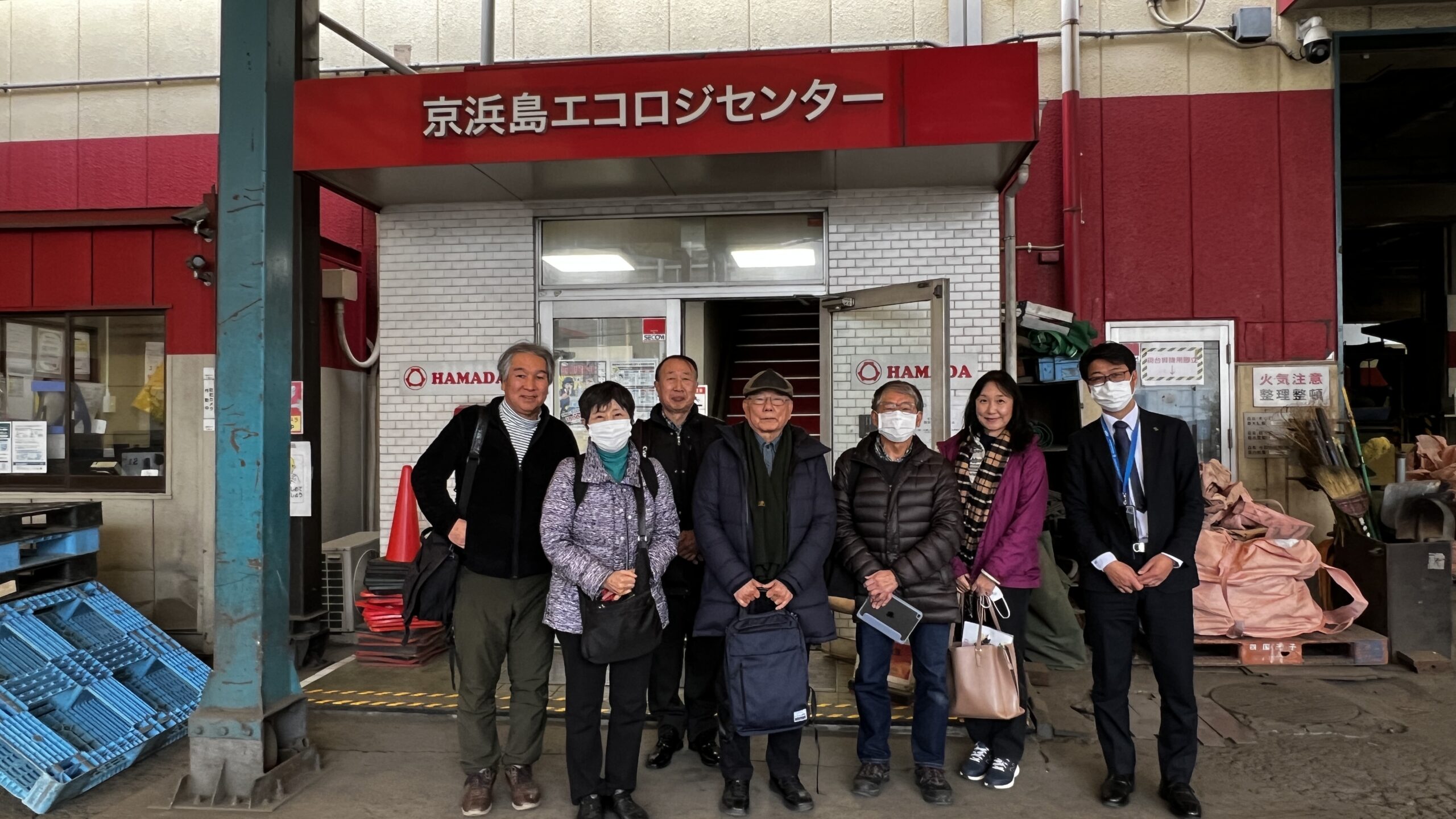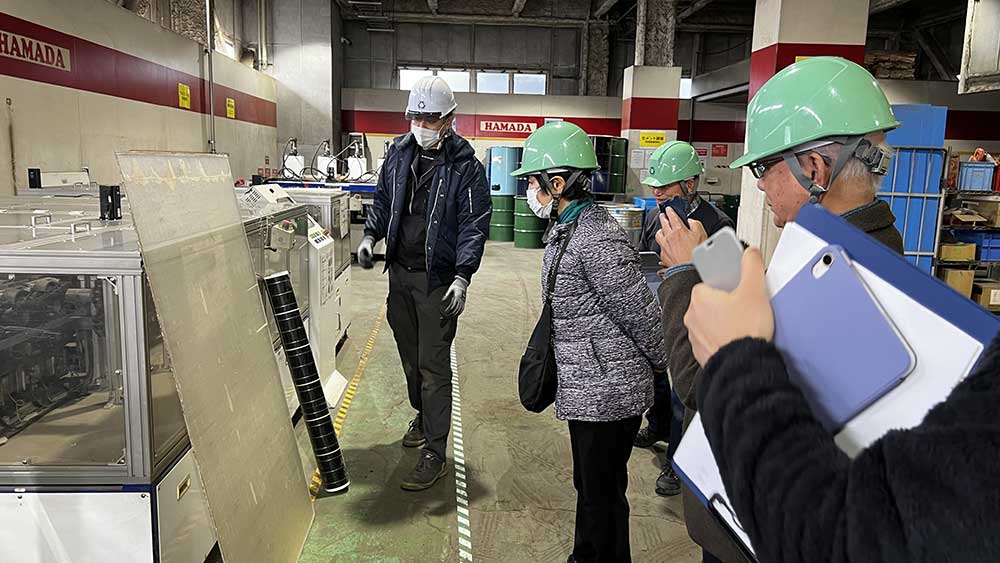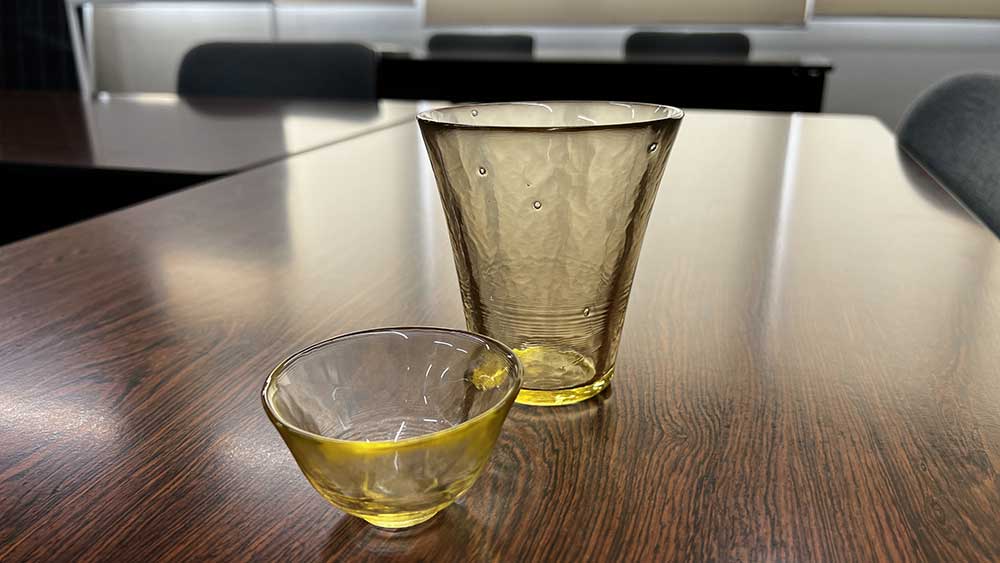Recycling Solar Panels
2024年2月1日 Feb.1, 2024
資源エネルギー庁によると、太陽光パネルで発電した電気の固定買い取り制度がはじまってから2023年12月までに導入された、住宅、非住宅をあわせた太陽光発電導入容量は72537万kW、合計件数は399万件になりました。
FIT制度(Feed In Tariff) – 自然エネルギーで発電した電気の固定価格買取制度が始まったのが2012年なので、発電10kW以下の住宅では10年の買取期間が終わったパネルもでてきています。10kW以上の非住宅の場合は買取期間が20年ですが、2032年以降に大量のパネルが廃棄されることが心配されています。
太陽光発電パネルの廃棄物で、処分場が不足すると言う説もありますが、本当のところどうなのでしょうか。
今回はそのリサイクルを実際に行っている 株式会社浜田 京浜島エコロジセンターを、PVネットの方と一緒に訪問しました。
Since the FIT, Feed in Tariff was introduced in Japan in 2012, solar panels were installed on 3,990,000 places. After the FIT comes to an end, will they all go to the landfills? To find out how the solar panels are recycled, we visited Ecology Center of Hamada Corporation located in Keihinjima island in Tokyo.

羽田空港が近く、時折発着する飛行機が見える場所で、山本営業部部長より、会社の歴史、事業内容などのあと、太陽光パネルのリサイクルについてスライドで説明していただきました。
The factory is near the Haneda Airport. The sales department manager Mr. Yamamoto talked about the history of the company, overall business and recycling of solar panels.

太陽光パネルの寿命は通常15年から20年なので、現在パネルが撤去されるのは災害で破損してしまった場合と、屋根交換の時がほとんどだそうです。
野立ての規模が大きい太陽光発電所が台風で一部水没したり、地震で山崩れやパネルの架台が座屈して、全て撤去して廃棄した場合には、多額の処分費用がかかります。
太陽光パネルの廃棄処分の場合、重さ1kgあたり150円になります。
しかし、使えるパネルを分類して浜田さんが買取り、リユースとして中古市場で販売することで、撤去処分費用が約3000万円から300万円になったケースが実際にあったそうです。
中古パネルの販売価格は1kWhあたり25円なので、新品を購入するよりずっとお得です。数年しか使わない施設に、中古パネルを使用する会社もあり、今後このような需要は増えていくと思われます。
Solar panels can last 15 to 20 years or more. Most of the cases solar panels are brought are damages by natural disasters an replacing roof. Disposing of large amount of solar panels costs 150 yen per 1Kg. Hamada sometimes buy the used panels, and sell for second-hand market. There was a case that the disposal cost was reduced from 30 million yen to 3 million yen. The price of used panels are 25yen per 1kWh, so much less than new panels. There are demand for used panels for temporary facility.

素材としてのリサイクル♻️
シリコン結晶を使った太陽光パネルは約70%がガラスで出来ています。
水を被ったりして発電しないパネルはガラスが破損していなければ、アルミの外枠、ガラス、シリコンのあるセル/EVA シートに分離することができます。
実際の工程を見せていただきました。
アルミの外枠を外す装置ではガシャンという音とともに、アルミの外枠が外れます。
次に、ガラスとシリコン部分を分離する機械にいれると、
適切な温度と刃物の角度で、薄いシリコン部分を剥がし、薄いロールになったセル/EVAシートがでてきます。
Recycle as materials
70% of Solar panels with silicon cells are made of glass. If the glass is not broken, the panels can be separated to aluminum frames, glass and cells/EVA sheets.
First, the aluminum frames were separated with a machine.
Then the panels are inserted into a machine to separate cells/EVA sheets from the glass using hot knife, and they come out of the machine as a plate glass and a roll of cells/EVA.

ガラスは一枚づつ成分分析機にかけ、ガラスメーカーに売却します。
リサイクルすると気泡がはいったり、琥珀色になるのですが、それも趣があるようです。
さらに、セル/EVAシートは粉砕して、精錬メーカーへ売却し、銀や銅などの金属を取り出して再利用します。
このように、太陽光パネルはアルミ、ガラスを分けてリサイクルができるので、大量廃棄で埋立地が一杯になるという心配はないと思われます。
見学を快く受けてくださった、株式会社浜田 京浜島エコロジセンターの方、大変ありがとうございました。
Plate glass is put into component analyzer, and sold to glass manufacturer.
Recycled glass has amber color and bubbles, which looks warm and antique.
Cells/EVA sheets sold to other manufacturer are pulverized to extract silver and copper.
In this way, the aluminum and glass of solar panels can be recycled separately, so there is no need to worry about filling up landfills with large amounts of waste. .
Special thanks to the staff of Hamada Corporation at Keihinjima-island Ecology center.
Photo and report by Eri Hayashi

